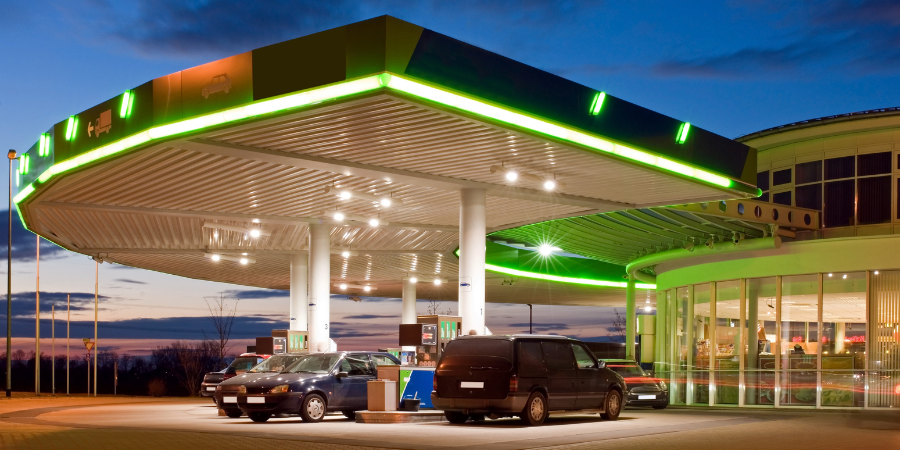
The forecourt sector has undergone notable transformations, influenced by various factors ranging from environmental concerns to changing purchasing patterns. Sorcha Simons, Insight Manager at Lumina Intelligence, sheds light on the attitudes and opportunities within the forecourt consumer market, drawing insights from Lumina Intelligence Convenience Tracking Panel and a recent Bespoke Forecourt Study, conducted with a sample size of 1000 consumers.
Market Context:
Three key macro trends in the forecourt sector:
- Concerns about rising fuel prices
- The ban on new petrol and diesel cars being pushed back by five years
- 43% more charge points for electric cars year-on-year
What’s been observed so far?
Despite fuel prices declining over the past year, the outlook for 2024 is less than positive, with shipping attacks in the red sea leading to fears that improvements may be reversed.
Rising fuel prices pose a real challenge to the sector, against the backdrop of continually low consumer confidence, and high interest rates making rent and mortgage payments high, leading to restrained consumer spending power.
In September, Sunak’s government announced that they would be extending the ban on the sale of new petrol and diesel vehicles, due to come in in 2030, by five years.
The possibility of a labour government after the next election in 2025 poses potential for this to be reversed, with Keir Starmer pledging to bring in the ban in sales of petrol and diesel cars much earlier.
Despite Sunak’s backtracking, the past year has seen progress towards increasing electric vehicles on the road, with 43% more charging points available in the UK this year than last, making electric vehicle ownership more feasible for many.
Finally, the year 2023 stood out as the second warmest year on record, coupled with extensive transport strikes, and the third wettest year on record. These environmental and socio-economic factors have undoubtedly impacted consumer behaviour and spending patterns.
Forecourt Spend
Interestingly, spend is far more volatile in forecourts than in the average convenience market, really retracting in March 2023.
This was a time when food inflation reached the highest point in 45 years – leading to consumers cutting back on non-essential spend.
The volatility of the market demonstrates that demand across the forecourt market is less stable than in convenience and more susceptible to market change.
Therefore there is a need to focus on keeping demand consistent.
Forecourt Shopper Demographics:
To focus on engaging the forecourt market we need to understand the forecourt shopper.
Data from Lumina’s convenience tracking panel indicates that Forecourt shoppers represent a distinct demographic profile compared to the average convenience shopper. Most forecourt consumers are male (56.3%) and reside with their partners and children (41.1%). Furthermore, there is a notable skew towards younger demographics, particularly within the 18-24 and 25-34 age brackets.
So ranges and messaging should focus on targeting this consumer group to maintain consistent forecourt demand.
Consumer Motivations and Preferences:
The key motivators behind consumer’s choice of petrol station brand/ forecourt are:
- Convenient Location
- Ease of use
- Fuel quality
- Queuing length
- Food and drink availability
Convenience emerges as the primary driver for forecourt usage, with 78% of consumers citing it as a motivating factor, followed closely by ease of use (64%). Interestingly, the quality of fuel also plays a significant role, influencing 32% of consumers’ decisions regarding where to shop for fuel.
Service Expectations:
The importance of good customer service cannot be overstated, with 62% of consumers considering it extremely or very important. Additionally, access to essential amenities such as air, water, and well-maintained toilet facilities contributes significantly to consumer satisfaction.
Shift Towards Electric Vehicles (EVs):
Despite the enduring popularity of petrol cars, there’s a notable trend towards EVs, driven primarily by environmental considerations. While petrol cars still dominate consumer interest, there’s a growing preference for hybrid and plug-in hybrid vehicles, reflecting evolving consumer preferences towards sustainability.
Implications for Forecourt Operators:
The rise of EVs presents both challenges and opportunities for forecourt operators. With an increasing number of consumers opting for home charging, forecourts must differentiate their offerings to remain relevant. Providing essential amenities such as toilets, hot food options, and well-stocked convenience stores can attract non-fuel customers and drive footfall.
Targeted Marketing Strategies:
Understanding consumer motivations is crucial for devising effective marketing strategies. For instance, consumers intending to purchase EVs are primarily motivated by environmental concerns. Therefore, targeting this segment with family-friendly offers and value-focused convenience ranges aligned with sustainability could yield favourable results.
Future Outlook:
As the automotive landscape continues to evolve, forecourt operators must adapt to changing consumer preferences and market dynamics. Investing in customer-centric initiatives, embracing sustainable practices, and diversifying product offerings are key strategies for future-proofing businesses in this competitive market environment.
In conclusion, the forecourt consumer is characterised by shifting preferences, driven by environmental consciousness, convenience, and service quality. By staying attuned to these trends and leveraging consumer insights, businesses can position themselves for sustained growth and success in the ever-evolving forecourt sector.

